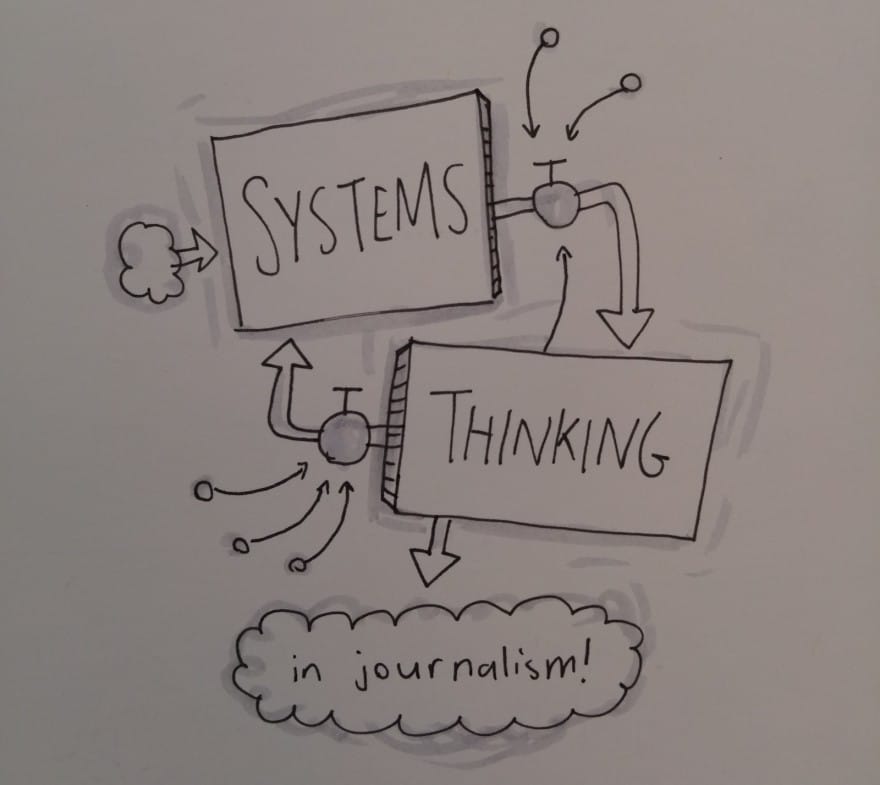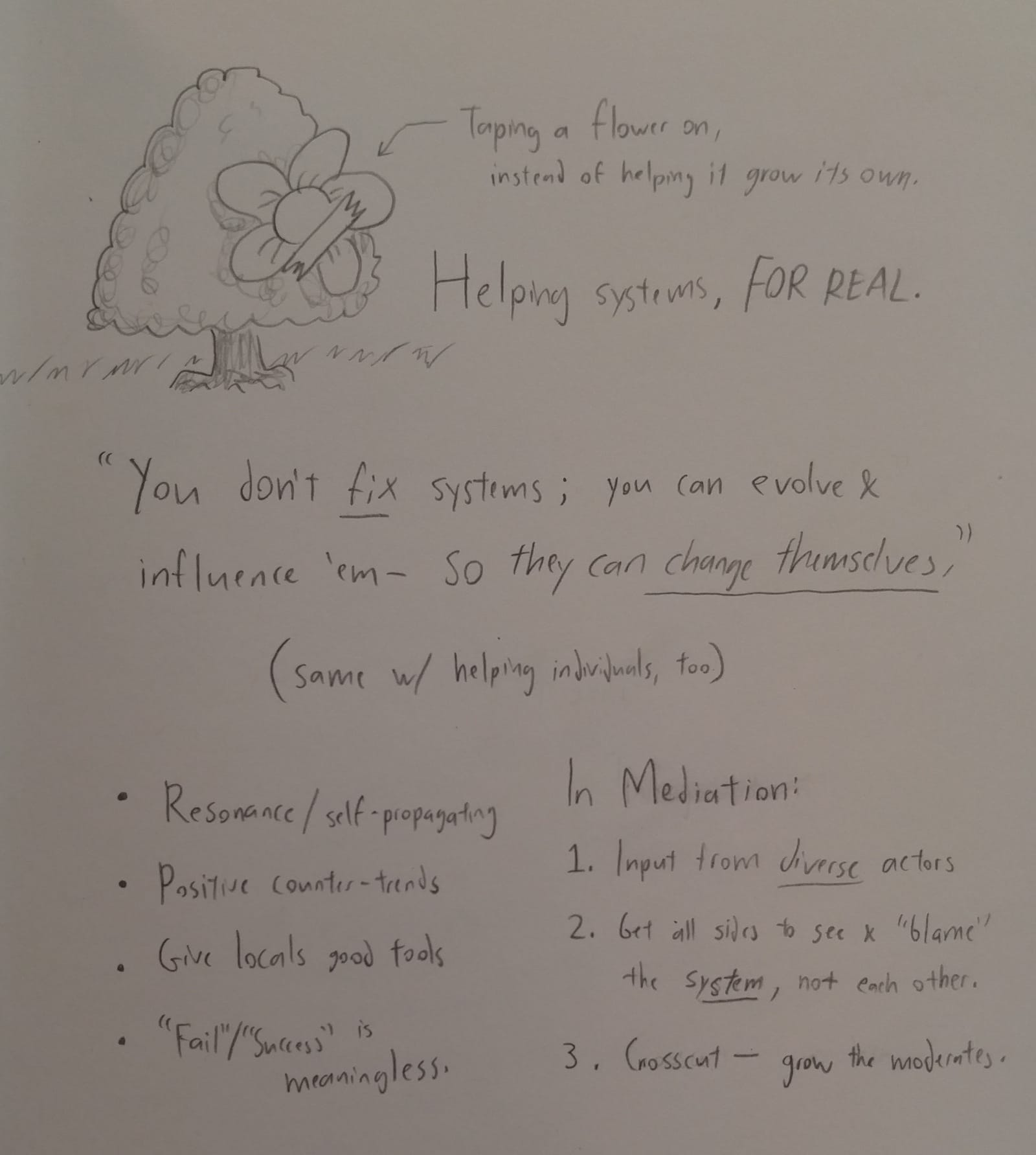A game designer speaks to how systems thinking can benefit journalism

Systems thinking is an approach to analysis, focusing on how different parts of a system relate to each other, and how they change over time and within the context of larger systems. That’s lot of words to process, but luckily Nicky Case has sketched up a great reflection on systems thinking in relation to journalism for those of us who may not be aware of the basics. You may recognize Case from their past work in describing how systems work through interactive simulations. After attending a two-day workshop on systems thinking for journalists, Case sketched up a blog post to explain the ideas further, particularly for those who aren’t as familiar with the concept.
First, Case establishes the difference between conventional and systems thinking, which is straightforward: the former is a linear cause-and-effect, while the latter is nonlinear cause-and-effect. Then, they expand with some advice on not only how to write stories about systems, but stories with systems. For Case the one overarching concept to remember is that “at the philosophical, emotional core of system-stories: empathy. Individuals may have noble motives, but are constrained by the system. ‘None are to blame, but all are responsible.'”
The notes Case provides from the event are also illustrated, visually showing how to use systems thinking to positively affect the world around you. In relation to journalism, systems thinking can be put to good use by helping a writer understand the connections and intersections that make the story their covering complex. All of it works toward making a healthier system overall and on a larger scale. As Case reminds readers, “You don’t fix systems; you can evolve & influence ’em so they can change themselves.”

Below the summarized workshop notes are Nicky’s personal reflections that don’t have as much context but provide a more exclusive view. There are pages of these sketches that dive deeper into how systems thinking can benefit journalism, with language that is easier to digest (like “What the diddly do dang is systems thinking?”).
A major takeaway from these notes for journalists is that applying a systemic way of thinking “can help all sides see that their enemies aren’t each other—but rather, they have a common enemy: the system.”
Read through Case’s entire article on systems thinking and journalism right here.



